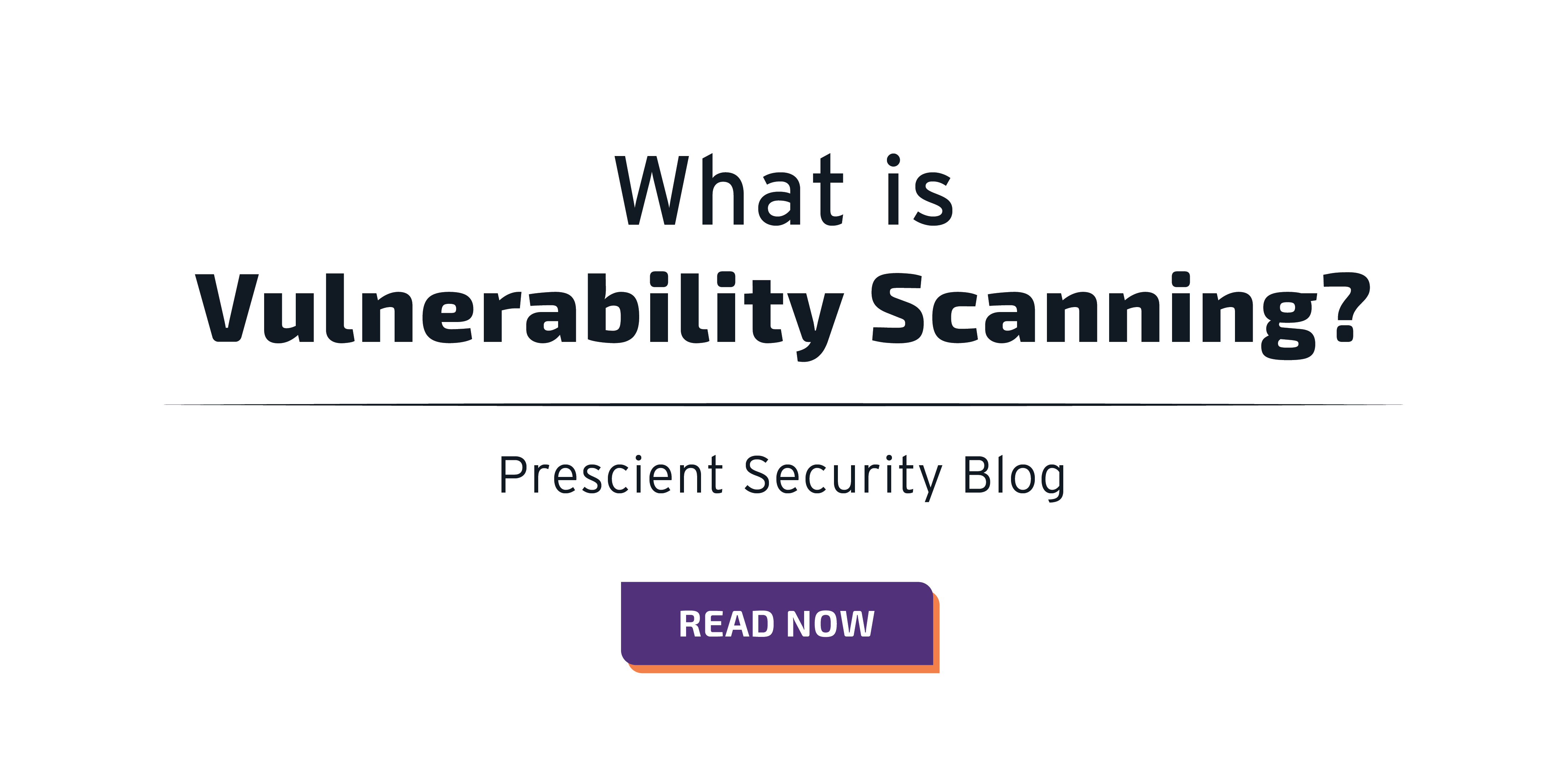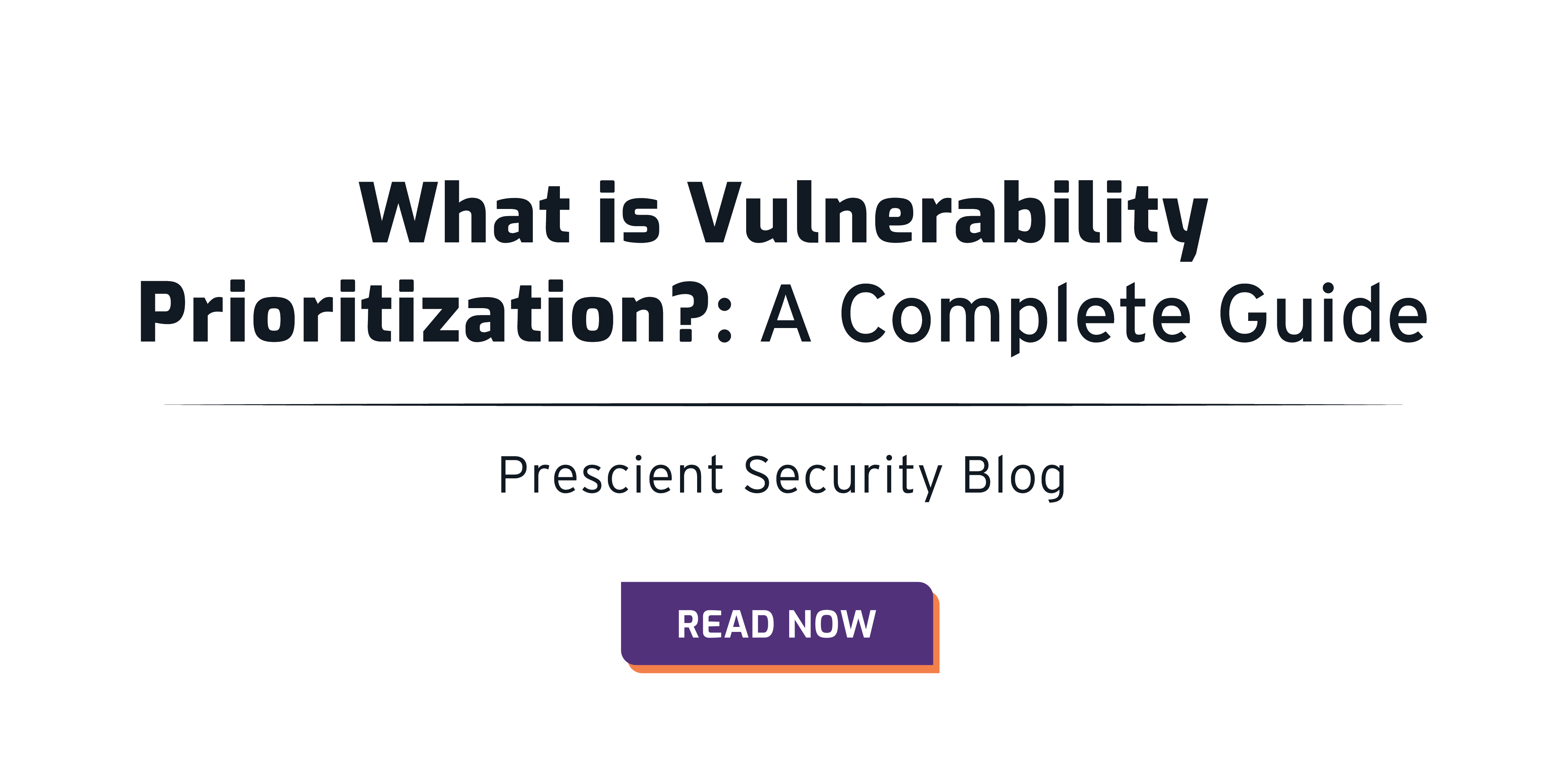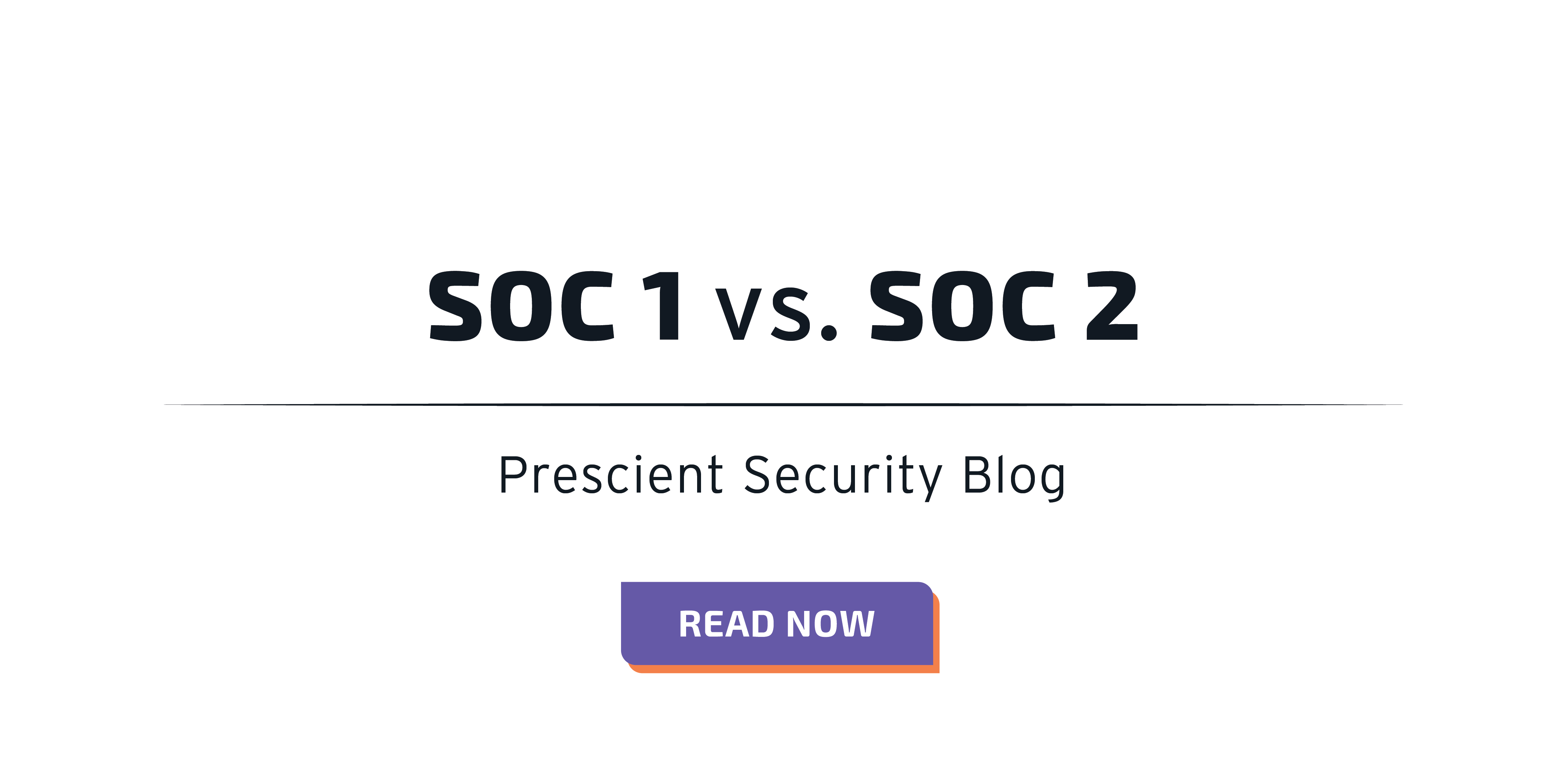Penetration Testing vs Vulnerability Scanning
 Gabriela Silk
·
5 minute read
Gabriela Silk
·
5 minute read
Penetration tests and vulnerability scans are vital tools for achieving cybersecurity and data privacy compliance. While penetration tests are offensive in strategy and vulnerability scans are defensive, when implemented correctly, both are crucial assets to the security strategy of an organization and satisfying compliance requirements. Like any tool, there is a time and place where each is most effective. In this article, we’ll put both to the test and break down how to choose the best option for your business and its compliance goals.
Contents
- What is a Vulnerability Scan?
- What is a Penetration Test?
- Penetration Testing vs. Vulnerability Scanning
- How to Choose the Best Fit for Your Organization
- Conclusion
- Penetration Testing and Vulnerability Scanning with Prescient Security
What is a Vulnerability Scan?
A vulnerability scan uses automated software to check for common vulnerabilities in an application or system. This includes outdated software, unsecured access, and misconfigurations.
The purpose of a vulnerability scan is to flag and prioritize weak points that attackers might be able to exploit. Because they’re automated, vulnerability scans can operate quietly in the background, continually monitoring for issues.
The information provided after each scan acts as a map of where the holes in a system are, and where further checks or interventions might be needed. Over time, scans can also expose patterns or reoccurring security issues.
The Benefits of Vulnerability Scanning
Here are the main benefits of vulnerability scanning:
- Detect Issues Early: The continuous monitoring offered by vulnerability scans means that problems are caught early, before they become a full-blown threat or degrade other aspects of a system.
- Save Costs: Early detection saves organizations the cost and stress of data breaches or big security fixes.
- Clear Prioritization: An effective vulnerability scan won’t just tell you where the problems are, it will show which needs to be attended to first so that organizations use their resources efficiently.
- Improve Compliance: Many cyber security and data privacy standards such as the GDPR and PCI-DSS require regular vulnerability scans as part of compliance. Having these scans in place ensures that certifications and other instances where they are a requirement are maintained.
- Detailed Reports: For companies with complex systems, worried that they can’t keep eyes on it all, vulnerability scans help demystify the state of a system and lay out exactly where the problem areas are.
- Boost Security: Even one vulnerability scan can point an organization toward possible security improvements.
The Challenges of Vulnerability Scanning
For all the advantages these scans offer, there are also challenges:
- Inaccuracies are Possible: Some scans struggle with false positives and negatives.
- Needs a Skilled Hand: The above tends to be more of a risk if the scanning software isn’t configured with proper parameters. Even though scans are automated, they still need a skilled professional or even a team to ensure the most accurate, useful results.
- Limited to Known Vulnerabilities: Vulnerability scans check systems against a list of common and known threats which limits how much they’re able to find. If a system’s issues fall outside of this scope, a scan could miss the problem. That’s why it's imperative to use scans that are regularly updating their threat lists and adapting to the newest issues.
- Can Be Disruptive: Aggressive or very in-depth scans can cause performance issues or disruptions.
- Can’t Be a One-Time Thing: As soon as you get a report from a vulnerability scan, that information is immediately outdated. A one-time report is useful, but regular scans are needed for robust protection against cyber threats.
- Doesn’t Confirm if an Issue is Exploitable: A guard dog can only bark to alert that there’s a threat. It can’t test if that’s actually true or not. Vulnerability scans work the same way. They flag the issue but confirming how much of a threat it could be is down to manual testing.
What is a Penetration Test?
Where vulnerability scanning is a defensive strategy, penetration testing is an offensive one. During a penetration test, ethical hackers take on the POV of a cyber-criminal and test the security measures of an organization by trying to breach it. The core element that makes a penetration test invaluable is that ethical hackers place themselves in the position of a cyber-criminal, exhausting, uncovering, and pursuing any possible vulnerabilities and security gaps, while testing with varying degrees of prior system information.
The value of a penetration test isn’t simply breaking past an organization's defenses but exposing where a system is vulnerable and what it’s vulnerable to. Penetration tests vary in approach and in what they assess. They can simulate external attacks, internal ones, network attacks, etc., and simulate everything from a hacker coming at the system blind, or one who might have insider knowledge.
No matter which is performed, the hackers will provide a report at the end on the weaknesses discovered and recommend fixes based on their findings.
The Benefits of Penetration Testing
Let’s take a look at the key advantages of penetration testing:
- Illustrates Full Extent of Vulnerabilities: Penetration testing doesn’t only show where vulnerabilities are. It highlights the domino effect of those vulnerabilities and just how interconnected security systems are.
- Rules out False Positives: Most penetration testing will have retesting included, but even without it, the manual approach it takes helps rule out false positives and provides more reliable results than automated checks.
- Part of Compliance: Annual pen tests are required in certain industries to maintain compliance with regulations such as HIPAA.
- Better Risk Mitigation: By simulating a cyber-attack, penetration tests often expose the full extent of the risks an organization might be exposed to and can jumpstart more proactive efforts as a result.
- Improves Employee Awareness and Training: Some penetration tests operate on social engineering and test employees as much as they do systems. The result is that employees are made more aware of where they’re vulnerable to things like phishing attacks, and organizations are given insight into how to improve anti-cybercrime training.
The Challenges of Penetration Testing
Penetration testing can be highly effective at improving risk mitigation and protection against cyber threats. That said, it still comes with challenges:
- Resource Intensive: This type of security testing is performed manually which means it often requires significant investment in time and labor.
- Limited Scope: The resources required mean that only so much can be performed with penetration testing. It’s usually only done once a year.
- Length of the Test Can Be Disruptive: It depends on the type of penetration test being done, but they can slow work and networks down (especially if the hackers get through).
- Requires Expertise: The weaker the hacker, the less effective the testing. A pen test requires people with high skill levels to get the full security benefits.
Penetration Testing vs. Vulnerability Scanning
Here’s a quick overview of the differences and similarities of these two types of security testing:
Similarities
- Both vulnerability scanning and penetration testing help improve cyber security and data protection measures.
- They flag vulnerabilities in systems and networks, albeit in different ways, and provide reports describing these issues.
- Both play an important role in compliance.
Differences
- Penetration testing is performed manually, while vulnerability scanning is automated. This also tends to make the latter cheaper and less resource-intensive overall.
- Vulnerability scanning can be performed continuously or at least multiple times a year. A pen test is usually only done annually.
- Despite being performed less frequently, penetration tests tend to be more complex and in-depth. The remediation recommendations also reflect this.
- Vulnerability scans take a broader look at things and cover far more range as a result.
- Vulnerability scans check for known vulnerabilities. Penetration testing has more flexibility.
- Penetration testing tests vulnerabilities. Scans flag them.
- Vulnerability scans show singular issues. Penetration testing tends to expose how aspects of a security system overlap and affect each other’s weak points.
How to Choose the Best Fit for Your Organization
There are two main things to consider when weighing up penetration testing vs. vulnerability scanning:
- Your compliance requirements.
- Whether you need a deep, real-world look at how your security system holds up against attackers or a more general, routine monitoring of protections.
Most organizations need both at some point for comprehensive risk management. Which to prioritize comes down to your immediate compliance needs and where your organization feels its strengths and weaknesses lie.
Conclusion
Though their approaches are different, vulnerability scanning and penetration testing each hold a valuable position in protecting organizations against cyber threats and compliance gaps. When applied correctly, both are strong tools that fortify the security of an organization, employing offensive and defensive risk mitigation strategy.
Penetration Testing and Vulnerability Scanning with Prescient Security
At Prescient Security, we offer a vulnerability scanning subscription service to ensure constant safety monitoring, as well as more targeted penetration testing. Both are designed to provide organizations with actionable cybersecurity insights and improve compliance.



